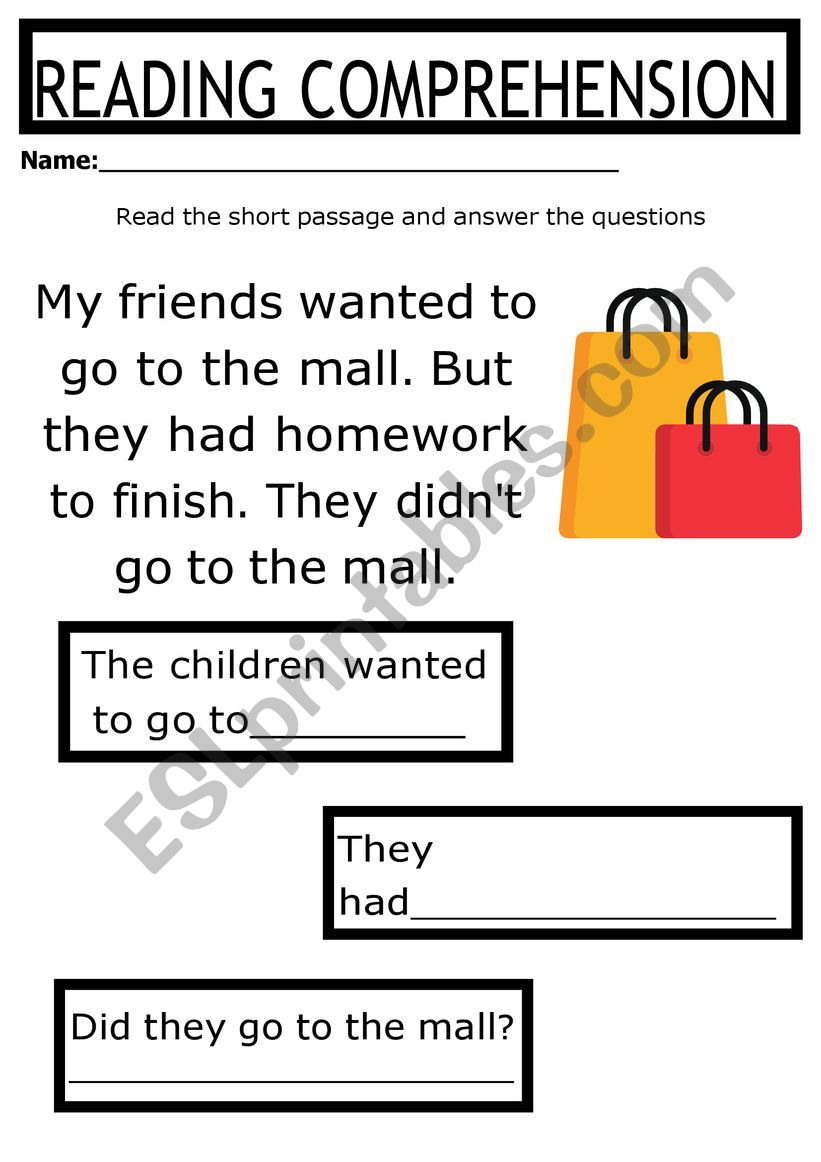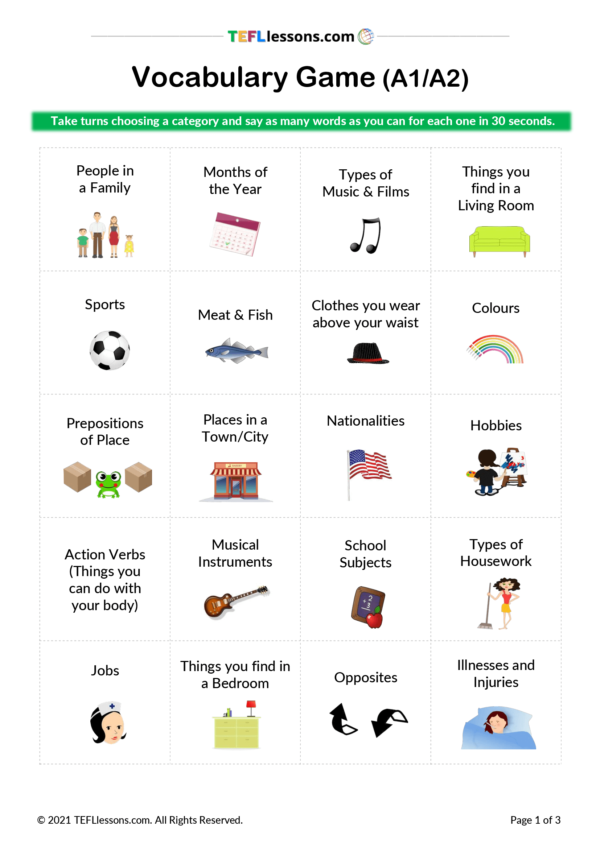
The Foundational Powerhouse: Unlocking Language with A1 ESL Worksheets
Learning a new language is an adventure, and for many, the journey begins at the A1 level. This initial stage, as defined by the Common European Framework of Reference for Languages (CEFR), is all about building a fundamental understanding of the language, enabling learners to engage in the most basic interactions. For educators and self-learners alike, one of the most effective and widely utilized tools for navigating this crucial first step is the A1 ESL worksheet. Far from being mere paper exercises, these carefully designed resources are the foundational powerhouse that equips absolute beginners with the essential vocabulary, grammar, and confidence needed to embark on their English language learning journey.
Understanding the A1 Level: The Absolute Beginner’s Blueprint
Before delving into the specifics of worksheets, it’s vital to grasp what the A1 level truly entails. An A1 learner is an absolute beginner, someone who has little to no prior exposure to English. At this stage, the primary goal is to develop the capacity for very simple interactions. According to the CEFR, an A1 learner can:

- Understand and use familiar everyday expressions and very basic phrases aimed at the satisfaction of needs of a concrete type.
- Introduce themselves and others and can ask and answer questions about personal details such as where they live, people they know, and things they have.
- Interact in a simple way provided the other person talks slowly and clearly and is prepared to help.




This means focusing on core vocabulary related to personal information (name, age, nationality), common objects (house, family, food), basic greetings, and simple daily routines. Grammatically, the focus is on fundamental structures like the verb "to be," simple present tense, basic prepositions of place, and singular/plural nouns. The beauty of A1 ESL worksheets lies in their ability to distill these complex concepts into manageable, digestible, and actionable tasks.
Why A1 ESL Worksheets Are Indispensable for Beginners
The effectiveness of A1 ESL worksheets stems from several key benefits that cater specifically to the needs of absolute beginners:
-
Structured Learning and Scaffolding: Worksheets provide a clear, step-by-step learning path. They break down complex language concepts into smaller, more manageable chunks. This scaffolding approach prevents learners from feeling overwhelmed and allows them to build knowledge incrementally. Each completed task builds confidence and reinforces previously learned material, creating a solid linguistic foundation.

-

Repetition and Reinforcement: Mastery at the A1 level heavily relies on repetition. Worksheets offer ample opportunities for learners to practice new vocabulary and grammatical structures multiple times in various contexts. This repeated exposure helps solidify new information in long-term memory, ensuring that basic concepts become second nature.
-
Active Engagement and Reduced Cognitive Load: Unlike passive listening or reading, worksheets demand active participation. Learners must process information, make choices, write answers, and apply rules. This active engagement enhances retention. Furthermore, the visual nature of many A1 worksheets (with pictures, matching exercises, etc.) reduces the cognitive load by providing non-linguistic cues, making comprehension easier for those with limited English proficiency.
-
Confidence Building Through Achievable Tasks: For beginners, early success is crucial for motivation. A1 ESL worksheets are designed with achievable tasks that learners can complete successfully, often with minimal assistance. This sense of accomplishment boosts self-esteem and encourages them to continue their learning journey, rather than becoming discouraged by the perceived difficulty of the language.
-
Versatility for Classroom and Self-Study: Worksheets are incredibly flexible. They can be used by teachers in a classroom setting for group work, pair activities, or individual assignments. For self-learners, they provide a structured way to practice independently, allowing them to progress at their own pace and review materials as needed. Many come with answer keys, enabling immediate self-correction and autonomous learning.
-
Assessment and Progress Tracking: Worksheets serve as an excellent informal assessment tool. Teachers can quickly gauge a student’s understanding of a particular concept by reviewing their completed worksheets. For learners, they offer a tangible record of their progress, allowing them to see how far they’ve come.


Diverse Types of A1 ESL Worksheets: Tailoring Learning Experiences
The world of A1 ESL worksheets is rich and varied, designed to target different skills and learning styles. Here are some common types:
-
Vocabulary Worksheets: These are perhaps the most prevalent at the A1 level. They focus on introducing and reinforcing essential words.
- Picture Matching: Learners match words to corresponding images (e.g., "apple" to a picture of an apple). This is highly effective due to its visual nature.
- Labeling: Students label parts of a diagram or objects in a scene (e.g., labeling rooms in a house or items of clothing).
- Fill-in-the-Blanks: Simple sentences with missing vocabulary words, often with a word bank provided.
- Categorization: Grouping words into categories (e.g., "fruit," "vegetables," "animals").
- Word Searches/Crosswords: Simple puzzles that reinforce spelling and recognition of new vocabulary.
-
Grammar Worksheets: These introduce and practice fundamental grammatical structures.
- "To Be" Conjugation: Extensive practice with "I am," "You are," "He is," etc., often in positive, negative, and question forms.
- Simple Present Tense: Exercises focusing on daily routines and facts (e.g., "I eat breakfast," "She works in a hospital").
- Plurals: Converting singular nouns to plural (e.g., "book" to "books," "child" to "children").
- Prepositions of Place: Using "in," "on," "under," "next to," etc., often with diagrams.
- Pronouns: Practicing subject, object, and possessive pronouns (e.g., "I," "me," "my").
- Sentence Scramble: Unscrambling words to form grammatically correct sentences.
-
Reading Comprehension Worksheets: Designed to develop basic reading skills.
- Short Passages with True/False or Multiple Choice Questions: Simple texts about everyday topics followed by basic comprehension checks.
- Matching Sentences to Pictures: Connecting a simple sentence (e.g., "The cat is on the mat") to the correct image.
- Information Extraction: Reading a short text (e.g., a simple personal introduction) and answering specific questions about it.
-
Writing Worksheets: Encouraging learners to produce their own simple English.
- Sentence Completion: Providing sentence beginnings for learners to finish (e.g., "My favorite color is…").
- Guided Writing: Templates or prompts that guide learners to write simple descriptions (e.g., "Write about your family," "Describe your favorite food").
- Picture Description: Writing simple sentences to describe what is happening in a picture.
-
Listening and Speaking Prompt Worksheets: While not traditional "listening" or "speaking" activities, these worksheets often contain prompts that can be used in conjunction with audio or for pair work.
- Listen and Circle/Draw: Learners listen to a description and circle the correct image or draw what they hear.
- Role-Play Prompts: Simple dialogues or scenarios for learners to practice with a partner (e.g., "Introduce yourself," "Order food at a restaurant").
- Question and Answer Pairs: Worksheets with basic questions and spaces for learners to write answers, which can then be practiced orally.
The strategic combination of these different types of A1 ESL worksheets ensures a holistic approach to foundational language acquisition, addressing various aspects of linguistic competence from multiple angles.
Key Principles for Designing and Selecting Effective A1 ESL Worksheets
When creating or choosing A1 ESL worksheets, several principles should guide the process to maximize their effectiveness:
- Simplicity and Clarity: Instructions must be incredibly clear and concise, ideally using very basic English or incorporating visual cues. The layout should be uncluttered and easy to navigate.
- Relevance and Practicality: Content should be immediately relevant to the learner’s life and everyday situations (e.g., personal information, family, food, daily routines, common objects). This makes the learning meaningful and immediately applicable.
- Visual Support: As mentioned, pictures, diagrams, and simple illustrations are invaluable for A1 learners. They provide context, aid comprehension, and make the worksheets more engaging.
- Manageable Tasks: Each task should be short, focused, and achievable. Long, complex tasks can be overwhelming and demotivating for beginners.
- Gradual Progression (Scaffolding): Worksheets should follow a logical progression, building upon previously learned concepts. Start with recognition, move to controlled practice, and then to freer production.
- Engagement and Interactivity: Incorporate elements that make the learning fun, such as puzzles, simple games, or collaborative tasks.
- Authenticity (Simplified): While simplified, the language used should still feel natural and reflective of real-world English, even if the context is highly controlled.
- Answer Keys: For self-study or quick teacher checks, including an answer key is incredibly beneficial.
Integrating Worksheets into the Learning Process
A1 ESL worksheets are most effective when integrated thoughtfully into a broader learning plan:
- Warm-up/Review: Use a quick worksheet at the beginning of a lesson to review previously learned material or to introduce a new topic.
- Guided Practice: After presenting a new grammar point or vocabulary set, use worksheets for controlled practice where learners can apply the new information immediately with support.
- Pair/Group Work: Many worksheets can be adapted for collaborative activities, encouraging learners to communicate and help each other. This adds a crucial communicative element.
- Homework/Reinforcement: Assign worksheets for homework to reinforce concepts taught in class and provide additional practice time.
- Assessment: Use completed worksheets to identify areas where learners might be struggling and need further support.
- Self-Study: For independent learners, worksheets offer a structured and comprehensive way to study at their own pace.
Beyond the Worksheet: A Holistic Approach
While incredibly valuable, it’s important to remember that A1 ESL worksheets are a tool, not the entire learning process. To truly foster language acquisition, they should be complemented by:
- Communicative Activities: Opportunities for learners to use the language in real-time, even at a very basic level (e.g., simple role-plays, question-and-answer sessions).
- Listening Practice: Exposure to simple spoken English through audio, videos, or teacher talk.
- Authentic Materials (Simplified): Introducing learners to very simple authentic materials like signs, labels, or short, adapted stories.
- Error Correction (Constructive): Providing feedback that is supportive and helps learners understand their mistakes without discouraging them.
Conclusion
In the realm of foundational English language learning, A1 ESL worksheets stand out as an exceptionally powerful and versatile resource. They provide the structure, repetition, visual support, and achievable tasks that are absolutely critical for absolute beginners. By breaking down complex linguistic concepts into digestible components, these worksheets empower learners to take their first confident steps in English. They build a robust base of vocabulary and grammar, foster reading and writing skills, and crucially, instill the confidence necessary to progress to higher levels. For anyone embarking on the exciting journey of learning English, or for educators guiding them, the thoughtful and strategic use of A1 ESL worksheets is not just beneficial – it is an indispensable cornerstone for success.
